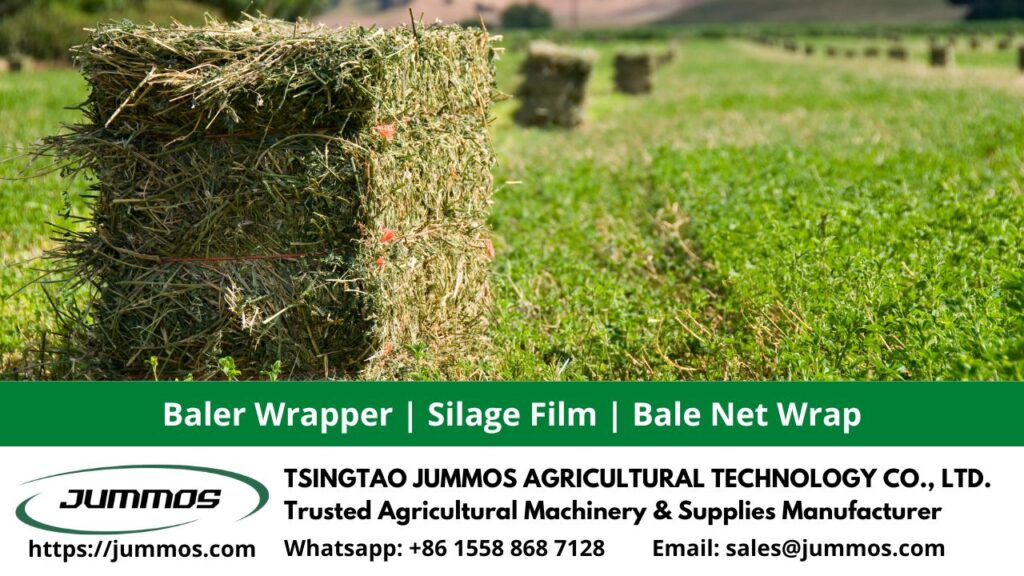
Alfalfa fodder (Medicago sativa) is a highly valued animal feed due to its exceptional nutritional profile and adaptability. This leguminous plant, which resembles clover, is widely grown primarily for hay, pasture, and silage. Alfalfa is also one of the best animal feeds in the world because of its tolerance to drought, heat, and cold, as well as its extraordinary productivity and quality.
Alfalfa fodder is a type of animal feed derived from the alfalfa plant (Medicago sativa). Alfalfa, also known as lucerne, is a flowering plant that has been cultivated as animal feed since ancient times. This legume plant is highly valued for its high nutritional qualities. Especially as an important source of vitamins, minerals, and essential amino acids for livestock.
Alfalfa is usually used fresh as forage, or dried and made into hay (dry grass) for use throughout the year. That is why this plant is often given in seasons when fresh forage is difficult to obtain.
When consumed, alfalfa is known for its palatability and is considered an excellent forage crop. Hydroponically grown alfalfa in particular is praised for its higher digestibility compared to regular hay grown in the field. This serves to increase feed efficiency and reduce dependence on concentrate feed.
Not surprisingly, this nutrient-rich and versatile feed is widely used in livestock production. Contributes to the overall health and productivity of the animal. Additionally, alfalfa is also recognized for its potential health benefits for humans, including its use as a source of essential nutrients and its association with stimulating breast milk production.
Contents
Main Characteristics of Alfalfa Fodder
This plant has several key characteristics that make it useful as animal feed. Here are several characteristics.
Main Planting and Growing Seasons
The alfalfa planting season usually occurs during the transition from spring to fall. However, the main growth occurs in late spring or early summer. Apart from that, this plant requires a long exposure time. The development of inflorescences for each alfalfa cultivar can also differ from each other because the length of light required is also different.
Nutritional Content
Alfalfa contains important nutrients such as protein, calcium, vitamins, and minerals. A cup of alfalfa sprouts contains nutrients such as Vitamin K, around 13% of the recommended dietary intake (RDI). All of these ingredients are suitable for use as feed for high-producing livestock. Also, making it the main choice to support growth and milk production in livestock.
Supports Livestock Health
Alfalfa is easily digested by livestock, thereby helping in more efficient nutrient utilization. The fiber in alfalfa also helps in the digestive function of livestock, maintains the health of the digestive tract, and increases feed efficiency. Apart from protein, alfalfa also provides the energy needed by livestock for daily activities.
Efficient and Multifunctional Use
As a legume, alfalfa can fix nitrogen from the air into the soil. It is used in crop rotation systems, increases soil fertility, and improves soil structure. In addition, it reduces the need for additional nitrogen fertilizer and controls weeds for the next crop to be cultivated.
How to Care for Alfalfa Fodder Effectively
To care for alfalfa fodder effectively, there are several steps you can follow. First, alfalfa plants need lots of sunlight and grow optimally in warm places. In addition, it should be noted that the dried leaves are very fragile, so you need to be careful during the drying process.
Storing alfalfa also requires special attention to ensure its quality is maintained. When storing alfalfa, it is important to guard against excessive moisture and too-hot conditions. The ideal storage place is a dry, cool place and protected from direct sunlight. Then, make sure to store the alfalfa in an airtight container to prevent moisture from entering. With proper attention, alfalfa storage can ensure the availability of high-quality feed for livestock.
In addition, if young alfalfa is consumed in too large quantities, this can cause bloating in livestock. To prevent this, it is recommended to feed livestock grass before giving alfalfa. Or withering by cutting alfalfa in the morning and giving it to livestock in the afternoon
Cultivating Alfalfa Fodder
In the context of cultivation, alfalfa requires soil that is not too wet during its active growth period. The alfalfa planting season usually occurs during the transition from spring to fall. In the context of animal feed, alfalfa can also be used as high-quality feed for laying hens. With the benefit of its ability to reduce the cholesterol content of egg yolks.
By paying attention to these factors, caring for alfalfa fodder effectively involves meeting sunlight requirements, paying attention to the drying process, and understanding the potential side effects of excessive consumption on livestock.
For optimal care and storage of Alfalfa fodder, don’t forget to use Silopak Silage Film. Silopak is a silage film manufacturer in China that focuses on maintaining the nutritional integrity of silage, mixed feed, hay, and corn. Our silage film has been rigorously tested and proven to be highly durable and able to withstand a variety of extreme weather conditions. Our films are also designed for easy use, flexibility, and UV resistance.
